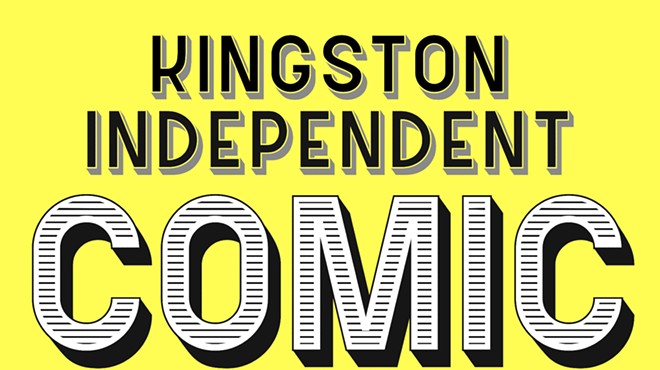Last summer, New York passed the Housing Stability and Tenant Protection Act, a package of sweeping tenant protections that reform the state’s affordable-housing laws. As we wrote at the time, for many housing-justice advocates, the most promising portion of the law is the expansion of the 1974 Emergency Tenant Protection Act (ETPA), which brought rent-stabilization guidelines from New York City to Rockland, Westchester, and Nassau counties with vacancy rates below five percent. The 2019 expansion allows municipalities across the state to opt in to rent stabilization under those same parameters as well.
Even before the new law passed, legislators around the Hudson Valley were signaling their desire to adopt some form of rent control, including lawmakers in Hudson, Newburgh, and New Paltz who endorsed rent stabilization for their communities.
Kingston seemed to be where the ETPA extension would be first put to the test in the Hudson Valley. A 2017 Ulster County housing survey by the Rural Ulster Preservation Company (RUPCO) found that more than half of county residents pay at least 30 percent of their income to housing. The same survey estimated that the county’s largest municipality—Kingston, where more than half of residents rent—had a vacancy rate of just 1.12 percent, well below the five percent required to qualify for rent stabilization under the ETPA.
In May of last year, the Kingston Common Council overwhelmingly passed a nonbinding resolution supporting rent regulation, an effort backed by Mayor Steve Noble. After the housing reform passed, Noble committed to conducting a housing survey to determine the city’s actual vacancy rate, a prerequisite to vote on the ETPA extension.
The city paid Rochester-based Center for Governmental Research (CGR) $32,000 to conduct the vacancy study. In accordance with ETPA provisions, the survey only analyzed rental properties that would be eligible for rent stabilization were it to be enacted—those completed before 1974 with at least six units.
CGR published the study on February 20 after three-and-a-half months of research: Kingston currently has a net vacancy rate of 6.7 percent. That means the city is not eligible to opt in to the rent stabilization afforded by the revised ETPA.
Devil in the Details
The ETPA does not prescribe a methodology for calculating the vacancy rate; to come up with that number, CGR modeled its approach on methodology the US Census Bureau uses to determine vacancies. In consultation with the Kingston assessor’s office, the organization identified 46 properties of six or more units built before 1974, surveying them using mailers, phone calls, emails, and site visits. Those properties have a total of 1,415 units, of which 1,048 were occupied, 77 were vacant, and 20 were unoccupied but were off the market for renovations or other reasons, including dilapidation, that made them unable to be counted as vacant at the time of the survey.
That left the net vacancy rate—essentially, the share of units open to renters seeking apartments—at 6.7 percent. Owners of another 21 properties totaling 193 units either did not respond to the survey or provided incomplete information. But as the report notes, even if all of those units were counted as occupied, with no vacancies, the city's net vacancy rate would be 5.8 percent, “still above the threshold to declare a housing emergency.”
The results surprised many, including Mayor Noble, who told the Common Council's Laws and Rules Committee that he was “personally disappointed,” and that while the city’s shortage may not rise to the level of a “housing emergency” as defined by the ETPA, it was clear that for many residents, housing is simply unaffordable. Council Majority Leader Reynolds Scott-Childress said that he had invited Ulster County Planning Director Dennis Doyle to meet to discuss crafting legislation that would regulate short-term rentals including Airbnb, which have contributed to housing shortages upstate. Childress also criticized the ETPA for not providing a clear mechanism for determining vacancy rates, and for relying on landlords to self-report.
What’s more, the net vacancy rate may not be the most accurate measure of determining whether or not a municipality is in a housing crisis. Home values are up more than 7.5 percent over the past year; some 30 percent of county residents pay at least half of their income in rent; and, while exact numbers are hard to come by, there is a lot of speculative investment by wealthy outside developers. A recent survey also found that Kingston has one of the hottest secondary home markets in the country. But given how hard legislators had to work even to give cities outside of NYC the option of introducing rent stabilization via the ETPA, it seems unlikely that the state legislature will tackle a new measure anytime soon.
The debate over rent stabilization spilled out into the public sphere, with the opinion pages of the local paper filling up with op-eds from anti-reform realtors and the pro-reform Kingston Tenants Union, as well as a misinformation campaign that targeted Kingston residents through automated calls saying that were the ETPA to be adopted, property taxes would increase to compensate for tax breaks for landlords of rent-stabilized units.
What Does It Mean for Other Cities?
Where Kingston goes from here is anyone’s guess. Groups like the Kingston Tenants Union have promised to continue advocating for tenant protections. And according to the Daily Freeman, Noble mentioned several legislative actions the city could take to address housing issues:
One of those would be to amend the city’s Landlord Registration and Inspection law to increase the frequency of the Kingston Building Safety Department’s health and safety inspections from every two years to once a year for buildings with six or more units, the mayor said. He said the city would be able to better monitor the health and safety of these apartments and manually collect its own occupancy and vacancy data.
The council also could adopt short-term rental regulations, as well as consider tenant-support legislation that could provide financial protection in the event tenants are forced to leave their apartments due to a health and safety issue in their building, Noble said. He said the council also could amend the city Zoning Code to require new apartment construction in Kingston to set aside at least 10 percent of the units as “affordable.”
As Kingston attempts to patch together a solution to its housing squeeze without being able to adopt the ETPA, other Hudson Valley municipalities will be watching. A few have already begun the process of determining their own eligibility.
During the February 18 common-council meeting in Hudson, members passed a resolution authorizing the city to conduct a housing-vacancy study; according to a housing-needs assessment attached to the resolution, two-thirds of households in Hudson rent, and 45 percent of those renters are overburdened, meaning they pay at least 30 percent of their income in rent.
Beacon, which had an estimated 6.8 percent rental vacancy rate at the time of the Census Bureau’s 2017 American Community Survey, is looking to conduct a housing study as well. The city has become a microcosm of the debate over development and gentrification in the Hudson Valley. Last year’s local elections, in which longtime councilmember Lee Kyriacou defeated the two-time incumbent and pro-development Randy Casale for mayor, were a referendum on the pace and scale of change in the city.
Housing prices are a particular concern in Beacon. The 2017 ACS report estimated that more than half of the city’s renter households pay 30 percent or more of their income in rent, and the median home value has increased by 44 percent, adjusted for inflation, since 2000, compared to 30 percent for the rest of Dutchess County. Many on the new city council, including Ward One representative Terry Nelson, are eyeing the ETPA as a potential solution. According to Nelson, the council plans to discuss its options at a future meeting, and will solicit proposals for the study thereafter.
“We are still in the early stages of this game,” Nelson says. “I’m hoping we don’t meet the same fate as Kingston.”


















